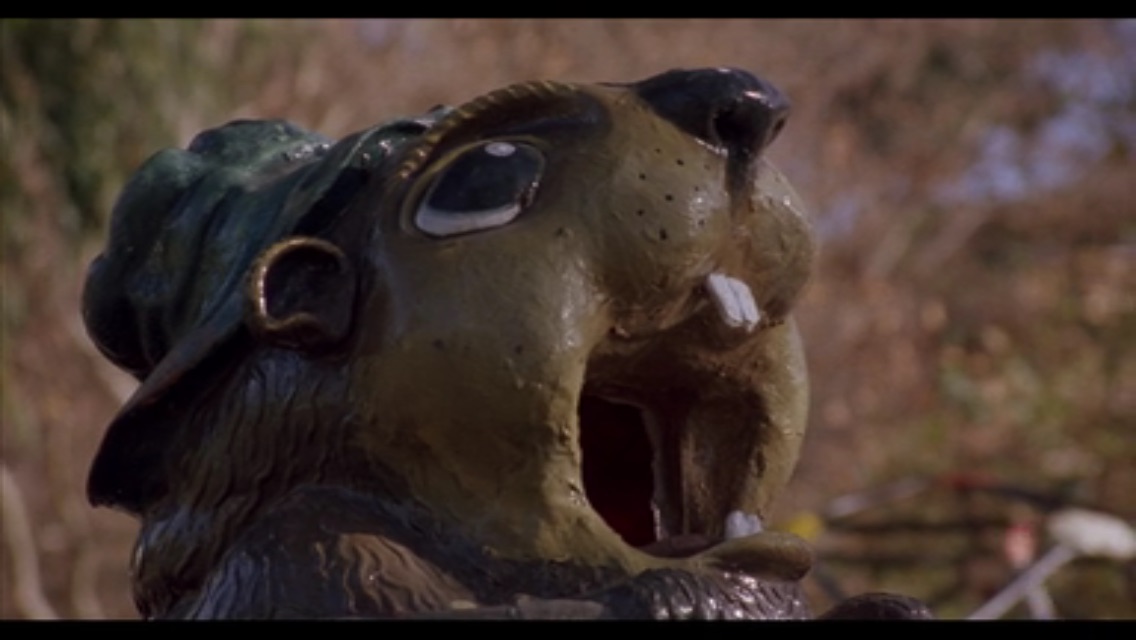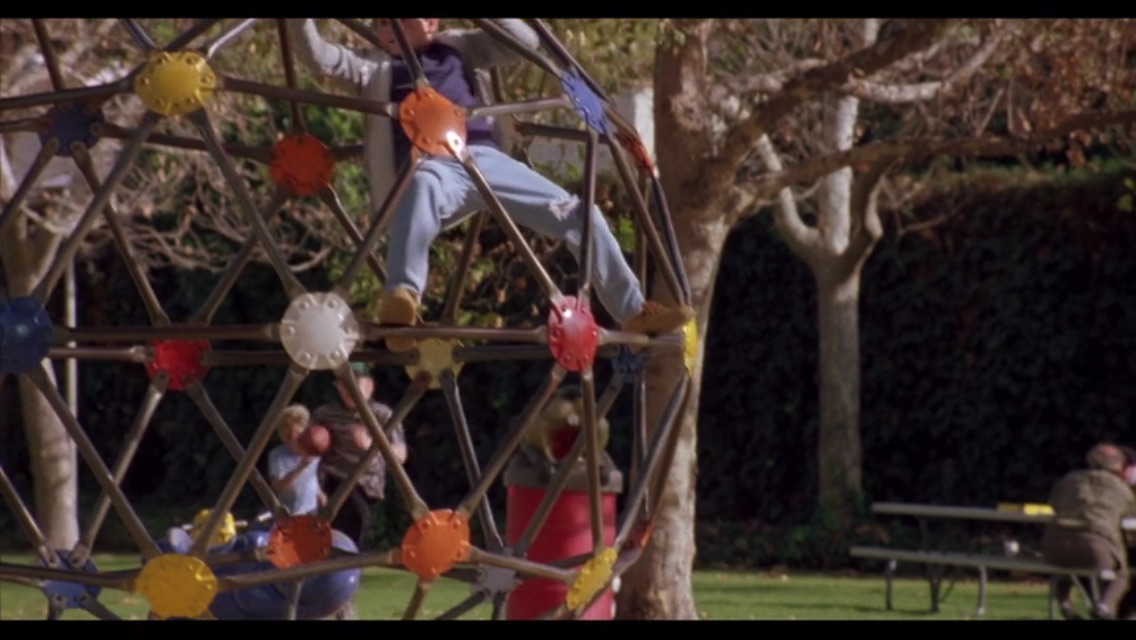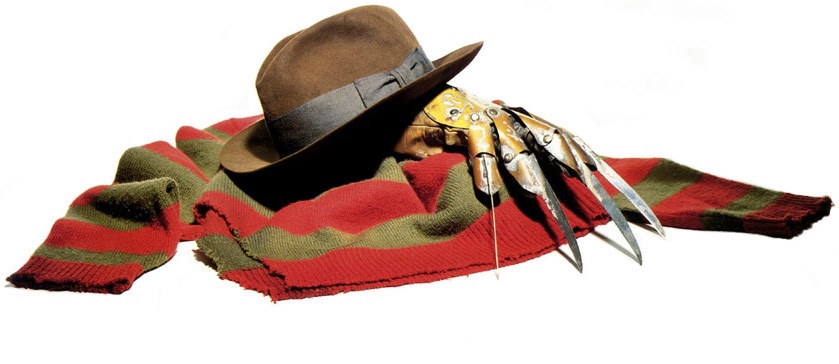this is still a script, right, wes?
Parasocial relationships are not just for fictional characters. For example yesterday Wes Craven died. Numerous individuals online--myself included--posted about him as if they (we) knew him. As if his death matters on a personal level. But, we probably just saw his films over the years. Still, we form an attachment. We look forward to his new films... He hadn't directed a film since SCRE4M four years ago. A couple weeks ago, I got to thinking about Robin Williams dying a year ago. Back when I was still watching Groundhog Day every day instead of just once a month, I wrote three entries in a row (207 208 209) dealing with the death of Harold Ramis. And, it was personal to me. Groundhog Day was my life for a year, and it lingers still, not just in viewing it once a month but also in conversational references, in lecture references (I use the news clips from Groundhog Day in my public speaking class to talk about delivery), in the way I think about things, about life. Not long before he died, I even had a potential link to contact with Ramis, probably not in person as his health wasn't good, but... something.
As for Wes Craven, I've seen most of his movies. (I think the only feature he directed that I didn't see was Music of the Heart. I've seen his horror films, seen the sequels he didn't have so much to do with.) I've read interviews over the years--used to subscribe to Fangoria and Cinefantastique among other magazines that would deal in horror-related articles. And, as with Ramis' death, Craven's death matters because of all he has influenced in other filmmakers, not just in his own output. The horror genre, the slasher subgenre specifically owes a lot to Wes Craven.

(Watching A Nightmare on Elm Street right now, by the way, and thinking of putting on Wes Craven's New Nightmare after. Notably, if you click on the link just now for the the original, you will see a pathetic little entry because, well, the night I watched that movie I was exhausted from a traveling day, sitting in a chair in a hotel in Portland, doing my darnedest not to fall asleep. I left that blog entry as is because it seemed thematically appropriate that I couldn't stay awake for A Nightmare on Elm Street.I shall be returning to Struck by Lightning tomorrow. Not because it is a fantastic movie--it does okay with what it's doing, but it's nothing special--but because it's an easy in for me if I want to deal with parasocial relationships some more. I do.)
In fact (regarding that parenthetical), I've got more to say about parasocial relationships today. As I said at the top of today's entry, they don't have to be with fictional characters. You can have them with filmmakers as well, have them with actors, celebrities of all types.
And, there is too much to say today. I want to talk about parasocial relationships, I want to get into stuff I never managed to get into when I watched this movie in Portland last year--Christensen's (2011) piece on how Nancy (Heather Langenkamp) is a better feminist model than most Final Girls in slasher films, for example. Sidney in the Scream films is pretty good, too. One key detail--"Nancy is able to defeat Freddy," Christensen writes, "but not by resorting to phallic violence"--an important element of Clover's (1987, 1992) Final Girl. Christensen also cites Kendrick (a source, for some reason, I did not acquire last year); Kendrick (2009) points out that Nancy also "actively reject[s] the [male] gaze by turning her back on Freddy" (p. 29). This counters Clover's take on the usual Final Girl, and Kendrick suggests it is specifically because of Craven; "...which serves as an embodiment of Craven's conviction that 'the only way to ultimately end violence is to turn away from it, to take its energy away' (qtd. in Sterritt 1984, 34). Nancy's turning her back on Freddy can be seen as controlling the gaze in that she has the power to either accept or reject it, rather than simply being its object; she essentially denies Freddy the status of object within her own gaze while also denying her status as object within his [and ours, I'd add]." (pp. 29-30). Nancy, here, Nancy/Heather in New Nightmare, Sidney Prescott--these are not just vulnerable women. Craven offered something better.
By the way, a bit about parasocial relationships before I move on to New Nightmare. Cohen (2004) tells us,
Indicators of [parasocial] relationships are similar to attributes of personal [i.e. IRL] relationships: feeling sorry for the characters when they make a mistake...
Which is why we forgive the problems with Swamp Thing or Vampire in Brooklyn (I rather liked enjoyed that one, actually, though it certainly had its faults), knowing that this guy made Last House on the Left and A Nightmare on Elm Street and Scream. Hell, Shocker even works pretty well, though it always felt to me like too deliberate an attempt to capitalize on the popularity of Nightmare to create a new franchise.
Cohen continues:
...missing them when they are gone, looking forward to seeing them, wishing to meet them in person, and seeking information about them. (Cohen, 2004, p. 191, citing Rubin, Perse & Powell, 1985)
As for seeking information, it has admittedly been a while since I've sought information on Craven so I'm learning "new" stuff today--stuff I probably knew once upon a time but forgot--like that he was went to Christian school and he had a degree in philosophy, and he taught humanities courses. He was a teacher. Even aside from the filmmaker stuff, and his many films I've seen, now I've got that connection as well, and it feels like it means something, like it matters. That is how parasocial relationships get going. Details that are meaningless, or coincidental feel like something more because of familiarity, or because we want familiarity, we need connections to make life worth living. It's not conscious, of course. We can recognize it as it happens if we know to look, but we don't do it deliberately.
And, Wes Craven's New Nightmare begins, finally. I took a break to rewatch Joe Bob Brigg's conversation with Craven in 1997 on YouTube. That the opening shot (making the knifed hand) echoes the opening of the original is a nice touch I don't think I quite recognized before; don't think I've ever watched these two movies together before. The cool thing with this movie, considering the topic of parasocial relationships, is how it alters those relationships. In an interview with Buzzfeed Lankenkamp says, "It wasn't really breaking the fourth wall; it was breaking the fourth dimension... It's not like we're looking at the audience and winking at them. We're taking the audience into a new spatial relationship with the real lives of people who act in them." (Speaking of their "real lives" movie Heather has a husband who works in special effects, and IRL Heather did that Buzzfeed interview from the FX house she owned and operated with her IRL husband.
As for Wes Craven and my parasocial relationship with him and his films--there is this that I just discovered: There's a scene at a playground in the film. Dylan (Miko Hughes) climbs up onto the top of the rocket and falls off. But, that's not the thing. See these (one close up, one across the way):


And, this prop from Groundhog Day, on display in the Woodstock, Illinois Public Library:

I got sidetracked googling whether Wes Craven was a fan of Groundhog Day or was friends with Harold Ramis, looked on IMDb to see if certain art department or set decorator folks were the same on the two films. But, nothing.
So, here's where my head takes it, because--and I can't believe I haven't used this phrase in this blog in a while--I'm in the mood for meaning: those groundhog trashcans are there deliberately for two reasons, 1) whether anyone but me would even notice, let alone recognize them, we've got some sense memory thing going on that invokes the surreality of the time loop just as we're getting into the meat of Dylan's possession storyline here. Somewhere deep down, we're reminded of Groundhog Day, of great comedy and the search for purpose and meaning in life--not unlike the way we might look at our lives and take stock when someone we know (or think we know) dies--and this moment in the film, where Heather's struggle becomes quite personal, and quite real resonates just a little more. The trap of the loop created between this film and the original, Heather being pulled back into Nancy, Wes being pulled back into Nightmare, all of us being pulled back a decade (or more, now) through echoes of an earlier film, earlier horror, and life and death matter on screen because we are there with the "characters" and the supernatural horror is secondary to the real-life horror of Dylan falling off of that rocket. 2) it's there for me, or for all people who watch too many movies. It's not that this movie is taking place in movie-Punxsutawney--it's taking place quite specifically in Los Angeles--but it's like Last Action Hero; movie world is movie world, regardless of the details. And, it has its gods, so to speak, the creators who build new neighborhoods, new characters, new stories--people like Harold Ramis or Wes Craven. And, the benefit we all have when they die is that their worlds keep going. On video, on cable, online--we may lose Ramis or Craven but their movies remain. Like the entity that wants to be Freddy Krueger here, the other characters and the places and even the words that make up the script, the mind that wrote those words, that directed the actions on screen--these things are immortal. Film is forever, each specific movie like a time loop you can visit whenever you like. You miss Harold Ramis, watch a film he directed, or watch a movie he starred in. Same with Wes Craven, and here he's got a few scenes as himself, haunted by the film he created. Movie Wes is more troubled than IRL Wes, sure, but still, there's a piece of Wes Craven in the Wes Craven he's offered us in the movie. And, it will always be there.
That playground might as well be in movie-Punxsutawney, or in any town at all, because maybe the details are unique but we all have to deal with our mortality, and if we're parents, we have to face the possibility of our children being hurt. There is no literal entity that Craven has captured in the guise of Freddy Krueger, but there is a universal idea captured there. There are many universals captured in this film, in any film, in all film. A character dies, we are allowed to mourn. Same applies to the real-world characters. The thing with parasocial relationships is, they are real and can feel as real as their real-world counterparts. Hell, arguably, they are just as real-world to those of us who have them, because they can make us feel just as strongly, make us laugh, make us cry, make us cringe with fear.
But, like Malorie in yesterday's movie, if we've got all of these things captured on film, we can fast forward through the boring stuff, rewind to re-experience the good stuff, or pause and take a thoughtful break when the bad stuff comes.
Take a moment to grieve if you must. Then, remember, the movie keeps going.

References
Christensen, K. (2011). The Final Girl versus Wes Craven's A Nightmare on Elm Street: Proposing a stronger model of feminism in slasher horror cinema. Studies in Popular Culture, 34(1), 23-47.
Clover, C.J. (1988). Her body, himself: Gender in the slasher film. Representations, 20, 187-228.
Clover, C.J. (1992). Men, Women, and Chain Saws: Gender in the Modern Horror Film. Princeton, NJ: Princeton University Press.
Cohen, J. (2004). Parasocial break-up from favorite television characters: The role of attachment styles and relationship intensity. Journal of Social and Personal Relationships, 21, 187-202.
Kendrick, J. (2009). Razors in the dreamscape: Revisiting A Nightmare on Elm Street and the slasher film. Film Criticism, 33(3), 17-33.
(A lot of K-sound names to go with Craven, I suppose.)
Comments
Post a Comment